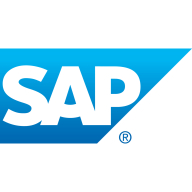

SAP Business One and ERPNext compete in the enterprise resource planning category. ERPNext seems to have the upper hand as it offers more flexible solutions.
Features: SAP Business One provides robust inventory management tools, comprehensive financial management tools, and strong brand presence. ERPNext offers extensive customization, seamless integrations, and adaptability, making it ideal for rapidly evolving businesses.
Ease of Deployment and Customer Service: SAP Business One typically requires longer deployment times and more complex integration. ERPNext, with its open-source model, allows for quicker deployment and easier modification. Customer service in ERPNext is personalized.
Pricing and ROI: SAP Business One generally entails higher initial setup costs and maintenance fees, impacting ROI. ERPNext offers lower initial costs and a quicker ROI due to minimal licensing fees. ERPNext's lower setup cost and high flexibility provide a more attractive ROI.
| Product | Market Share (%) |
|---|---|
| SAP Business One | 3.2% |
| ERPNext | 1.3% |
| Other | 95.5% |


| Company Size | Count |
|---|---|
| Small Business | 45 |
| Midsize Enterprise | 30 |
| Large Enterprise | 24 |
ERPNext is an open-source ERP system known for its flexibility and comprehensive capabilities, tailored for various business needs. It integrates multiple business processes into a single platform, enabling seamless operations and efficient resource management for organizations.
ERPNext offers an extensive range of features designed to streamline business operations across sectors, including manufacturing, retail, and services. Its modular structure supports accounting, human resources, inventory, and project management. Recognized for adaptability, ERPNext allows users to customize and extend functionalities, although improvements are encouraged in reporting tools and system scalability.
What are the key features of ERPNext?ERPNext is leveraged across industries like manufacturing, where it assists in production planning and inventory oversight. In retail, it manages point-of-sale operations and customer engagement. Service industries use ERPNext for project management and resource allocation, ensuring efficient service delivery.
SAP Business One offers a comprehensive toolset catering to the needs of small to medium enterprises, focusing on finance, sales, inventory, and manufacturing processes. Its features include real-time data processing, customization, and scalability, ensuring efficient business operations.
SAP Business One is a versatile ERP solution designed to support small to medium businesses across different industries. It streamlines operations through effective integration of sales, purchasing, inventory, and financial processes. Cloud accessibility enhances flexibility, while multi-currency handling and document management improve operational efficiency. Despite an outdated interface and limited HR capabilities, its user-friendly design and localization are highly beneficial. Users appreciate the real-time data processing capabilities and seamless operations across various modules, along with its adaptability to diverse business requirements.
What are the crucial features of SAP Business One?In manufacturing, SAP Business One optimizes production management and resource planning, improving efficiency and reducing downtime. Retail businesses benefit from its inventory and sales integration, ensuring accurate stock management and enhanced sales processes. Service industries leverage its automation and reporting capabilities for better client management and service delivery.
We monitor all ERP reviews to prevent fraudulent reviews and keep review quality high. We do not post reviews by company employees or direct competitors. We validate each review for authenticity via cross-reference with LinkedIn, and personal follow-up with the reviewer when necessary.